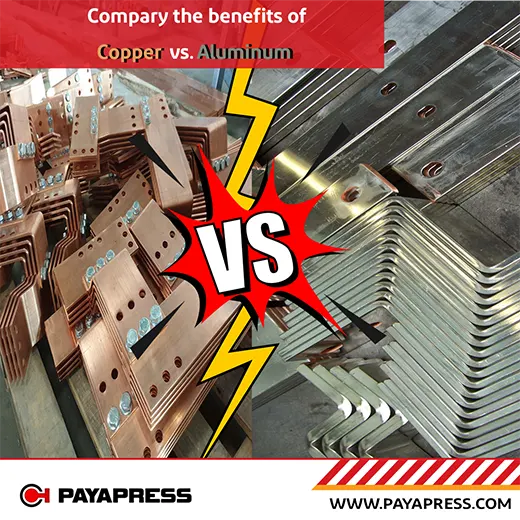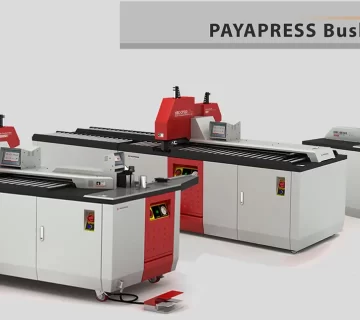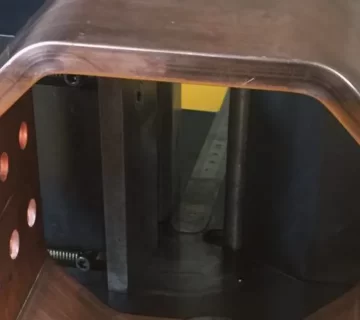Busbar systems are a critical component in power distribution networks. They serve as the conductive backbone, ensuring that electricity is transported efficiently and safely. The choice of material for these busbars is essential, as it directly influences the performance and longevity of the system. At PAYAPRESS, we understand the pivotal role that the right busbar machine technology plays in optimizing busbar systems. Let’s dive into the comparison between copper and aluminum busbars, highlighting their benefits and trade-offs.
Copper Busbars: Efficiency and Reliability
Copper is a favorite in the electrical industry for its exceptional electrical conductivity. Its ability to carry more current than aluminum for a given size makes it a reliable choice for high-density power distribution. The thermal conductivity of copper is also a significant advantage, as it enables better heat dissipation, reducing the risk of overheating in busbar systems.
When it comes to fabrication, copper’s ductility is a plus. It works harmoniously with busbar bending machines and CNC busbar processing machines, allowing for precise busbar bending and intricate designs. This malleability, paired with the advanced capabilities of a copper busbar machine, offers manufacturers the flexibility needed for custom busbar solutions.
However, the superior traits of copper come at a higher cost, reflected in the busbar price. The material’s heavier weight also means it might not be the optimal choice for all applications, especially where structural considerations are a constraint.

Aluminum Busbars: Lightweight and Economical
On the flip side, aluminum stands out for its cost-effectiveness and light weight. Its lower density is a significant advantage when constructing larger busbar systems, where the support structure’s weight is a critical factor. The affordability of aluminum is also appealing, as reflected in the busbar price list, making it a budget-friendly option for extensive power distribution projects.
While aluminum is less conductive than copper, modern busbar machines, including hydraulic busbar bending machines and CNC busbar punching & cutting machines, are well-equipped to handle its properties. These machines can compensate for aluminum’s lower malleability and ensure that the end product meets the necessary specifications for effective power distribution.
The challenge with aluminum lies in its larger size requirement to carry the same current as copper and its higher thermal expansion rate, which might lead to long-term stability concerns.
Making the Right Material Choice
Selecting the appropriate material for your busbar system is a decision that requires careful consideration of various factors including electrical and thermal requirements, weight, cost, and the specific capabilities of your busbar processing machine. Copper is unmatched in conductivity and heat management, while aluminum offers an economical and lightweight solution for broader applications.
As a trusted name among busbar machine manufacturers, PAYAPRESS is committed to guiding you through the selection process, ensuring you have the right tools, whether it’s a portable busbar bending machine or a busbar punching machine. Understanding the nuances between copper and aluminum busbars will empower you to choose the best material for your system’s unique needs, ensuring efficiency, safety, and cost-effectiveness in your power distribution projects.




No comment